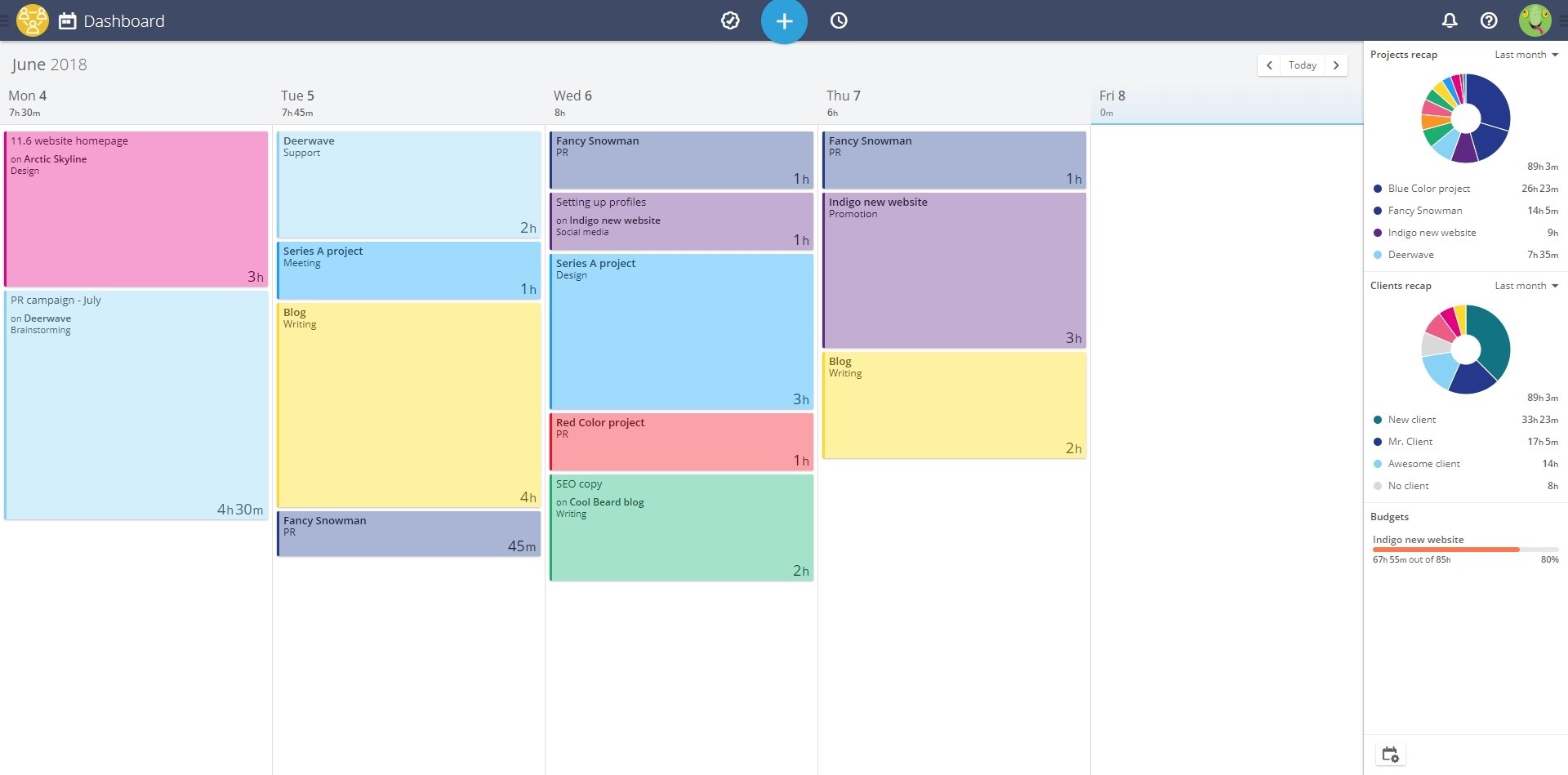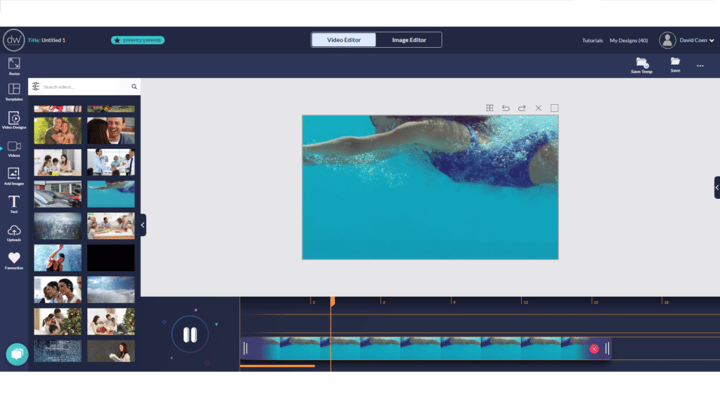I’ve been writing for the Timeneye blog for a couple of years, and if there’s one thing I learned, is this: blogging is hard.
A 2018 survey by CoSchedule showed that the majority marketers interviewed relied on blog posts. Producing high-quality, useful and engaging content requires a lot of energy and discipline. Researching, writing, refining, and promoting, take a lot of time.
Whether you’re a freelancer blogging to promote your activity, or a member of a content team education the audience about a product, or you work in an agency, you have to use your time carefully. Not to mention the dreaded writer’s block can make you waste precious hours and destroy your motivation.
I’ve compiled a list of the tools I use to save time and organize work. There, of course, a ton of cool apps and tools that do the job pretty well. Below you’ll find 5 tools I successfully integrated into my writing routine. Any suggestion is welcome!
First of all, blogging takes a lot of resources, dedication, and time. So the first tool is going to be, of course, one that allows people to measure and manage time.
To keep my blogging activity under control, I track time using our time tracking software, Timeneye. Even if our team hadn’t developed it, I’d probably use it anyway. Usually, I track my time by starting a timer, that I let run while I write. Having an active timer helps me focus on the work at hand and avoid distractions:

Also, tracking time allows me to clearly break my writing process into steps and track time for each of them. For example, I identified phases like brainstorming, researching, writing, and reviewing.
To start my timers more easily, I use the Timeneye Widget for Chrome. The Widget also integrates with Asana and Google Docs. To avoid losing track of the big picture of my work, I can go back to the Timeneye dashboard, where I find by entries and the time I registered. I also regularly run reports on my blogging activity to see how I distributed my time:

Here’s an example of the Timeneye dashbpard, with the weekly time tracked
This tool is the hero saving us from typos and embarrassing mistakes while making the revision process super-fast. Grammarly has a useful Chrome extension that, once installed, instantly corrects your grammar and also provides useful tips and synonyms. Sadly, it doesn’t integrate with Google Docs (yet). It also has a web-app where you can write your texts distraction-free, and have an instant grammar correction.
Grammarly comes with both a free basic plan, and paid, feature-rich PRO plan. Recently Grammarly has launched an interesting Beta feature to set “goals” for your text. Is it informative? Is it informal, or is it meant to have a higher elevated language? The app will instantly score your text according to the goals you set.
The key to a detailed, high-quality post? Research, research, and research.
Just last month I spent 3 hours on average researching data (thanks, Timeneye!) and material on every blog post wrote. Pocket allows me to save all the articles and content I find on the web, so I don’t lose too much time looking for it, or drowning in bookmarks. It’s possible to organize the links with tags and categories.
I spend my commuting time reading, so every time I find something interested, it gets saved to Pocket in case I need it for a blog post.
Blogs without images don’t perform well online. Because of that, adding graphics here and there is important. If you have a designer that does it for you, great! But if you don’t have the time and resources, you can use Canva. It’s a popular, easy-to-use tool to create images and graphics for your blog and social pages.
The app is super easy to use as you can adjust and personalize (to some extent) the elements on the image. If you need to get your images done fast, Canva does an excellent job.
Blogging and writing tons content won’t make your strategy successful without promotion. Buffer is a social scheduling tool that you can use for promoting and distributing your blog posts across social media.
Basically, you set up a schedule for posting, by choosing the day of the week and the hour of publication. Then you link the social account to Buffer, and start scheduling. Buffer offers a Chrome extension, too, which is super useful to share images. Having the possibility of scheduling the posts in advance, instead of doing it manually every time, is definitely a time-saver.
As a bonus, I’m an avid reader of the Buffer blog on social media marketing, which full of great tips and case studies.
Another tool in the design category is called Design Wizard.
Great graphics are essential for social media and content marketing. With Design Wizard’s easy-to-use software, you can create impressive image and video designs in minutes. Free features include a resize button, and the ability to add text and shapes to images. You can also create brand color palettes!
The library holds over 1 million premium images, thousands of high-quality videos, illustrations, graphics and more. All images and videos have also been licensed for commercial use

Do you manage a blog? What are the tools you use to save time? Let me know in the comments! If you like productivity apps, take a look at these five tools for fast-growing businesses.